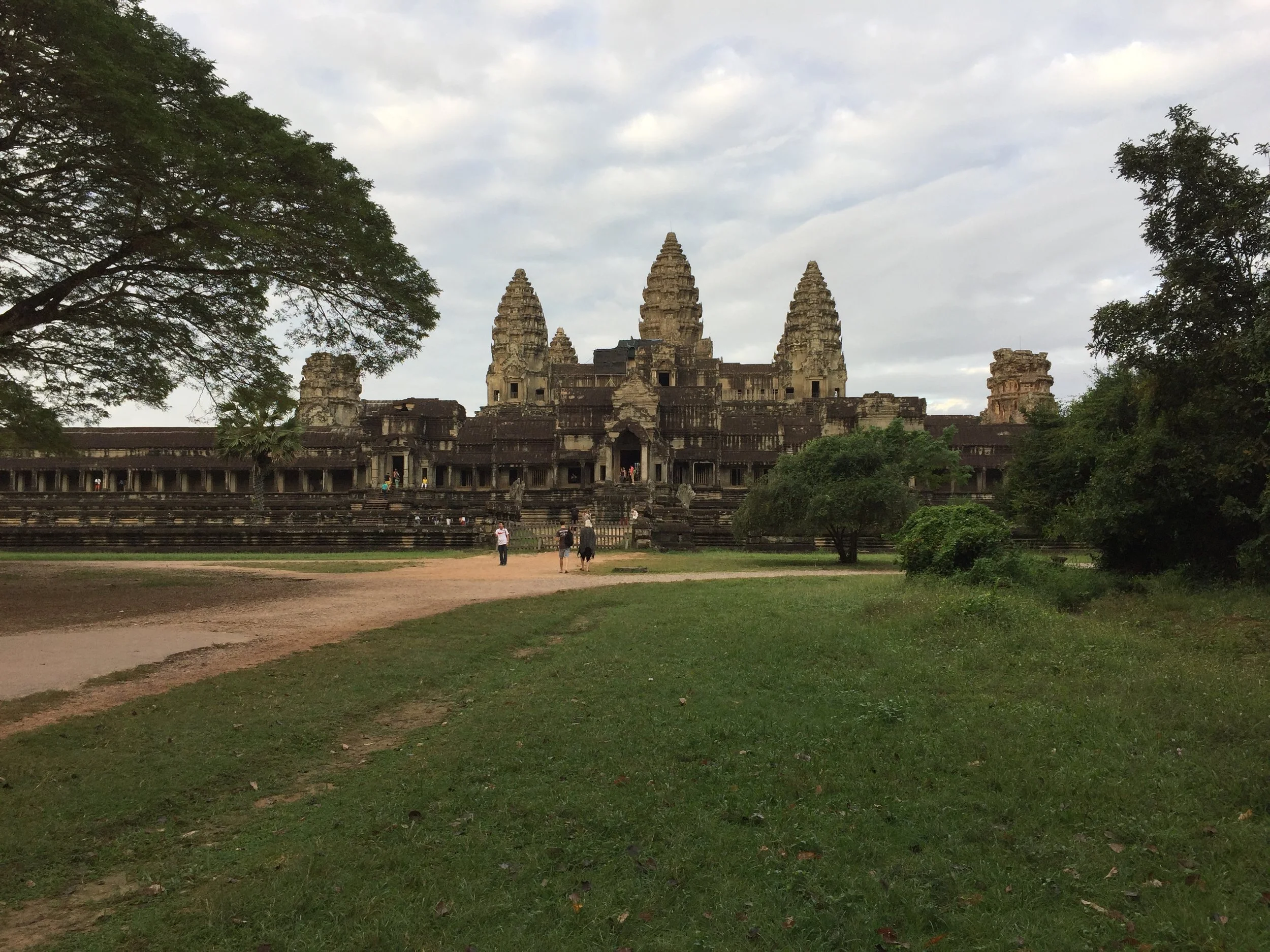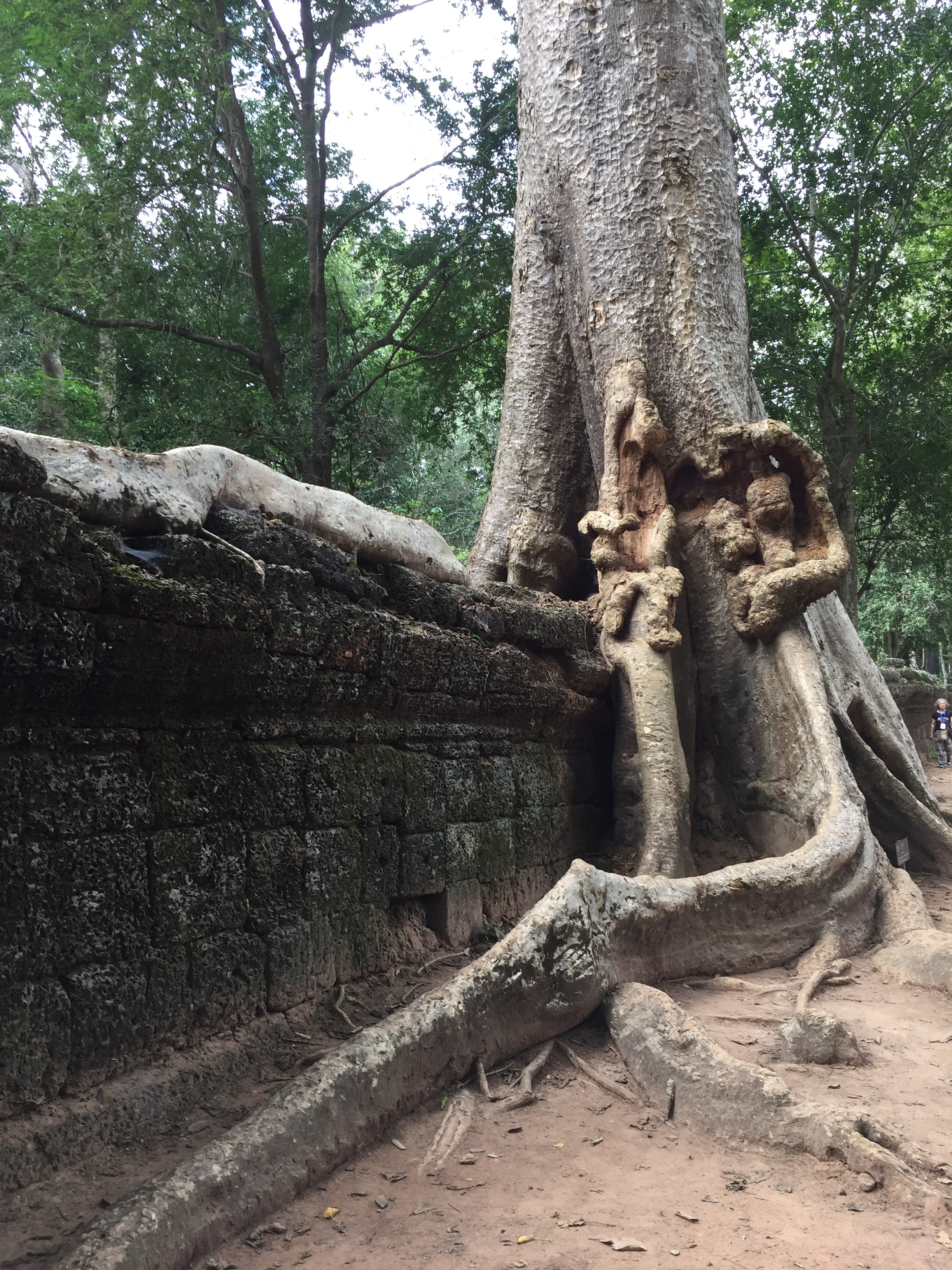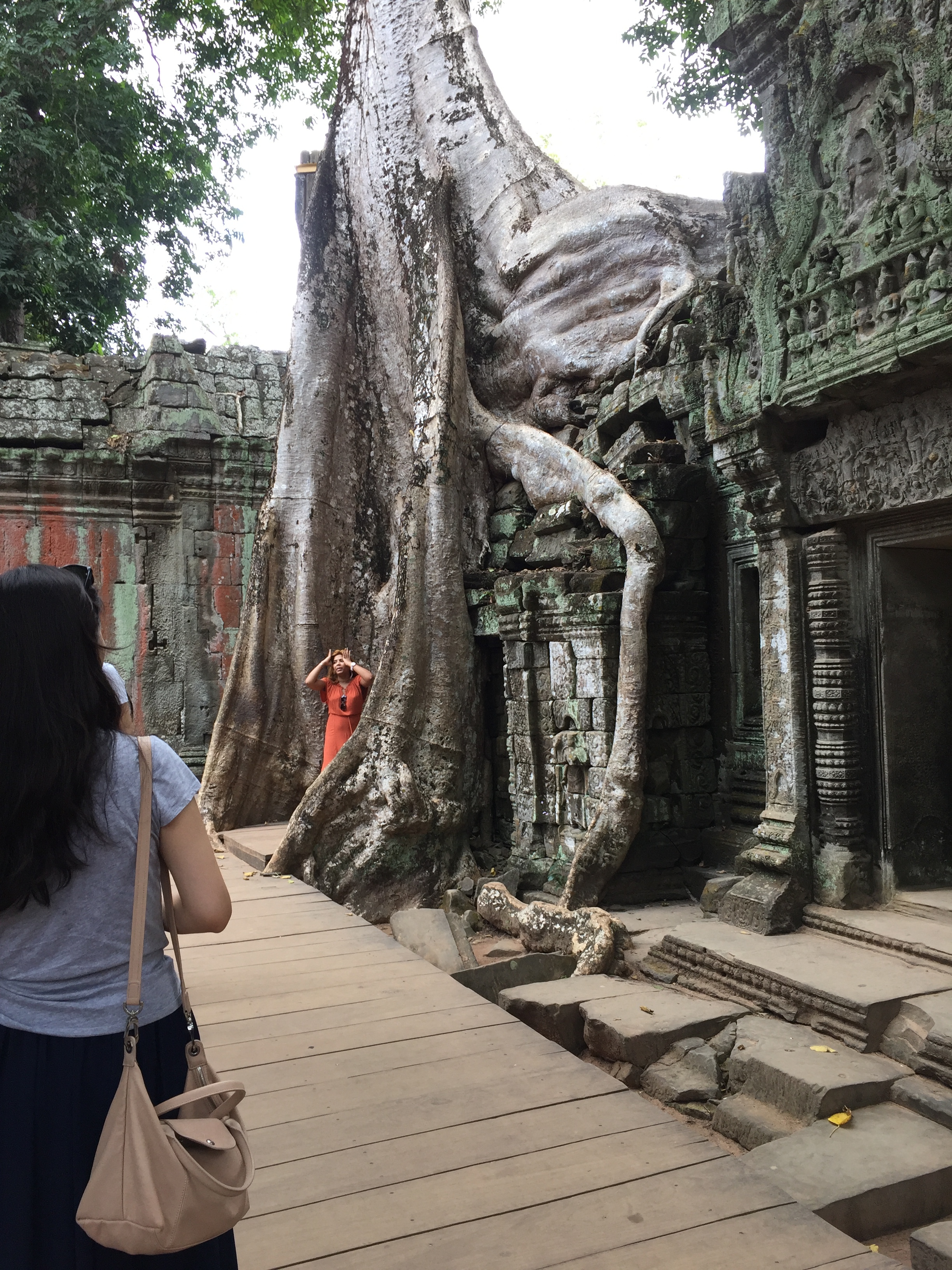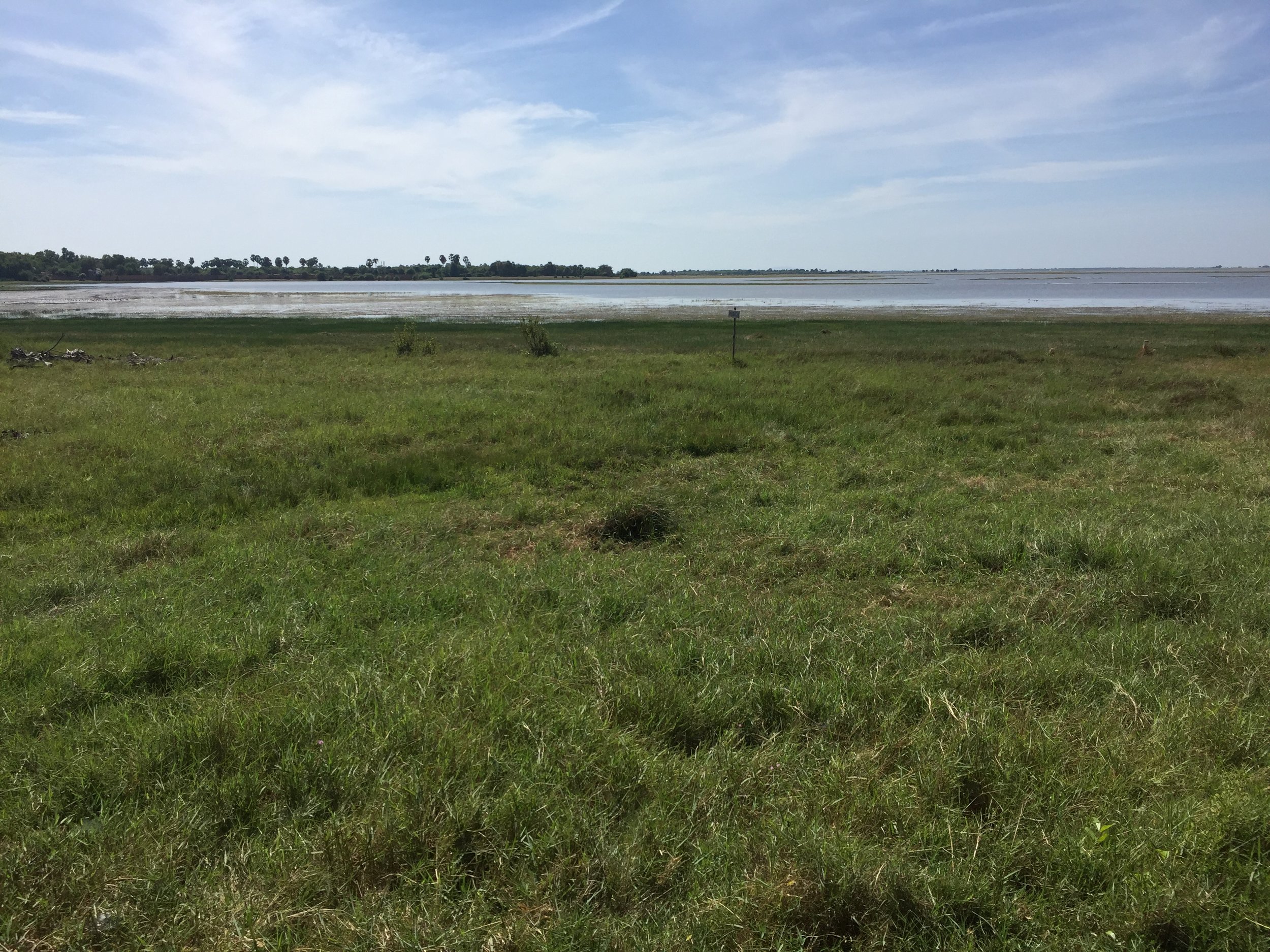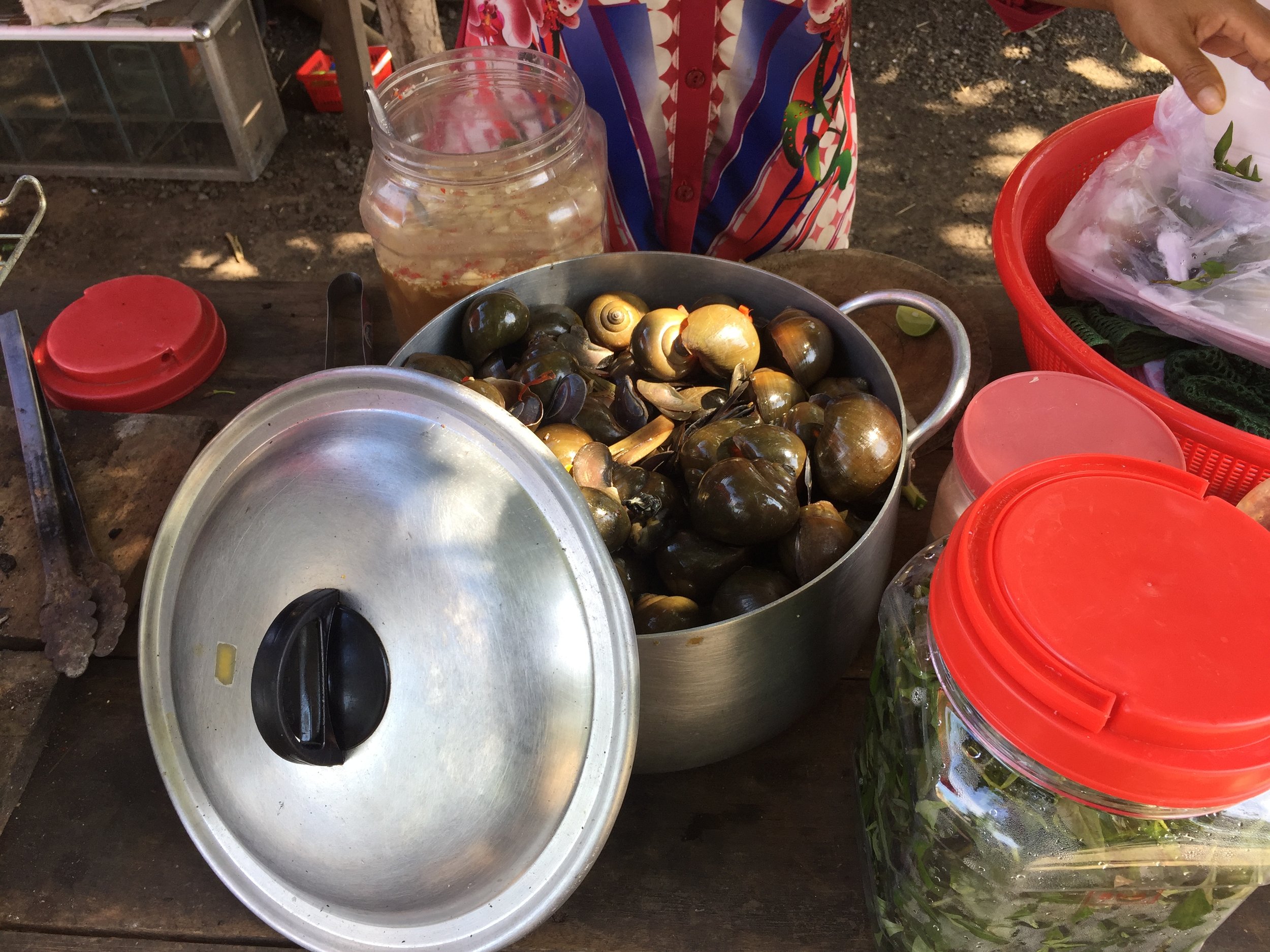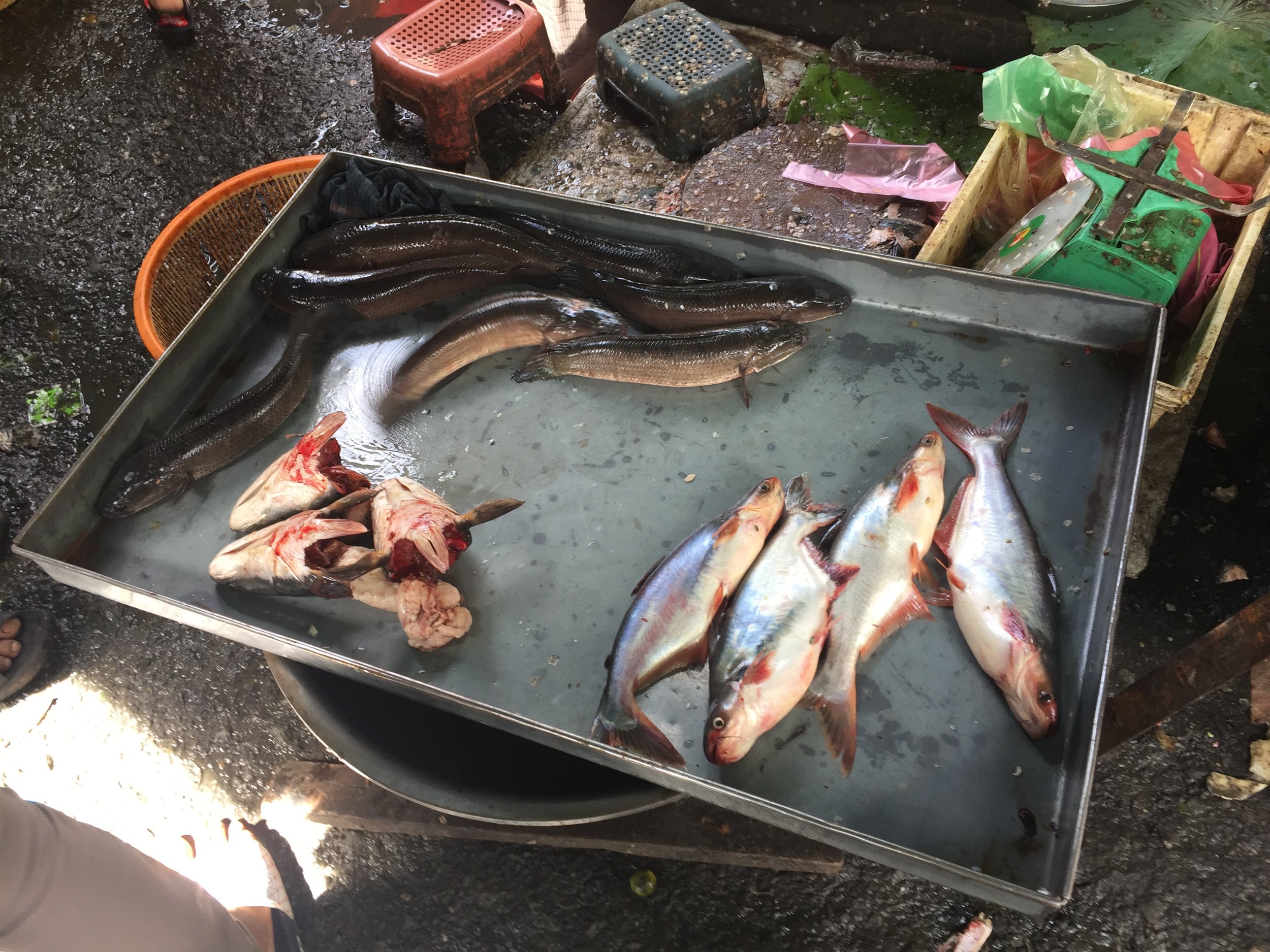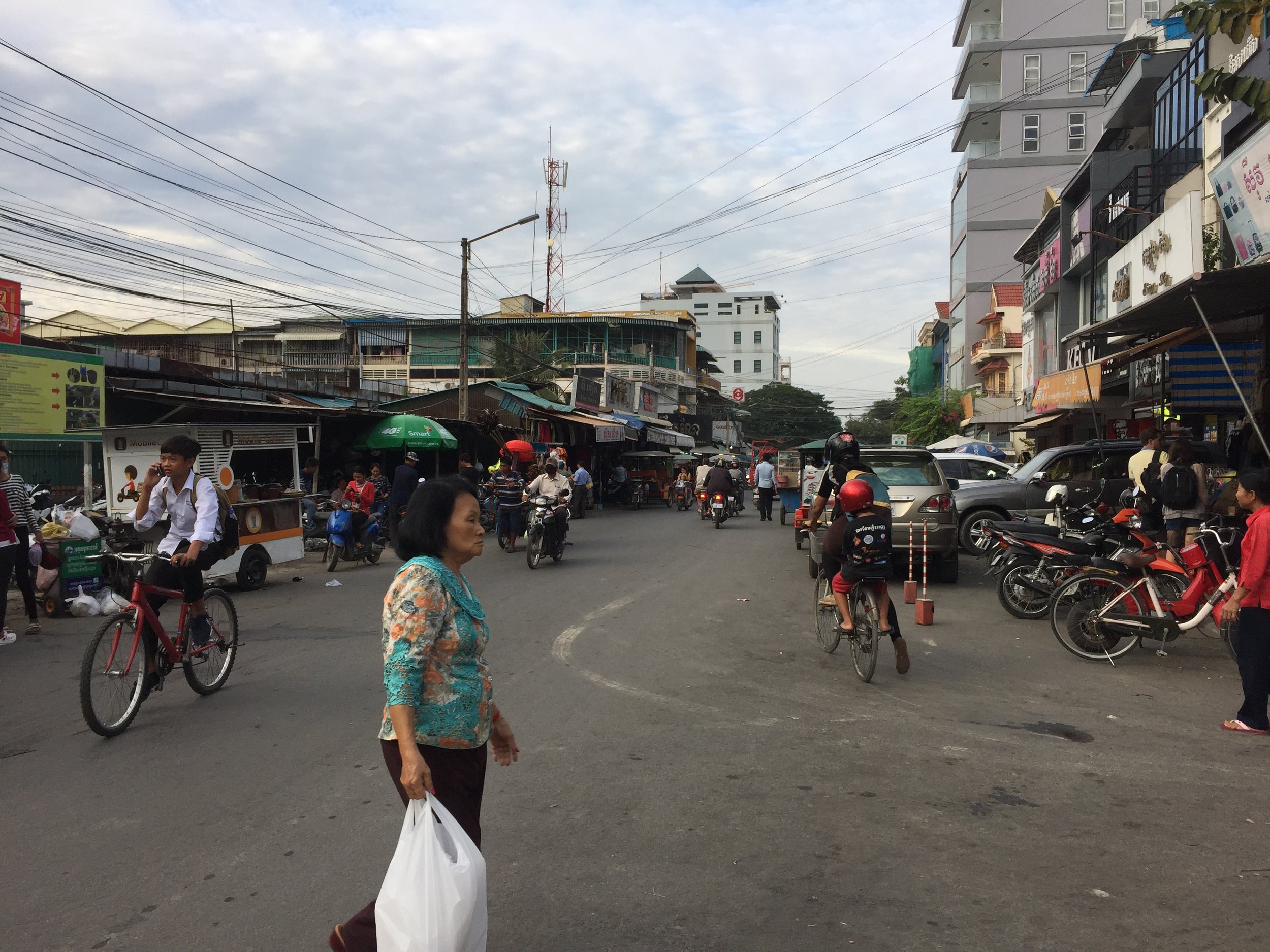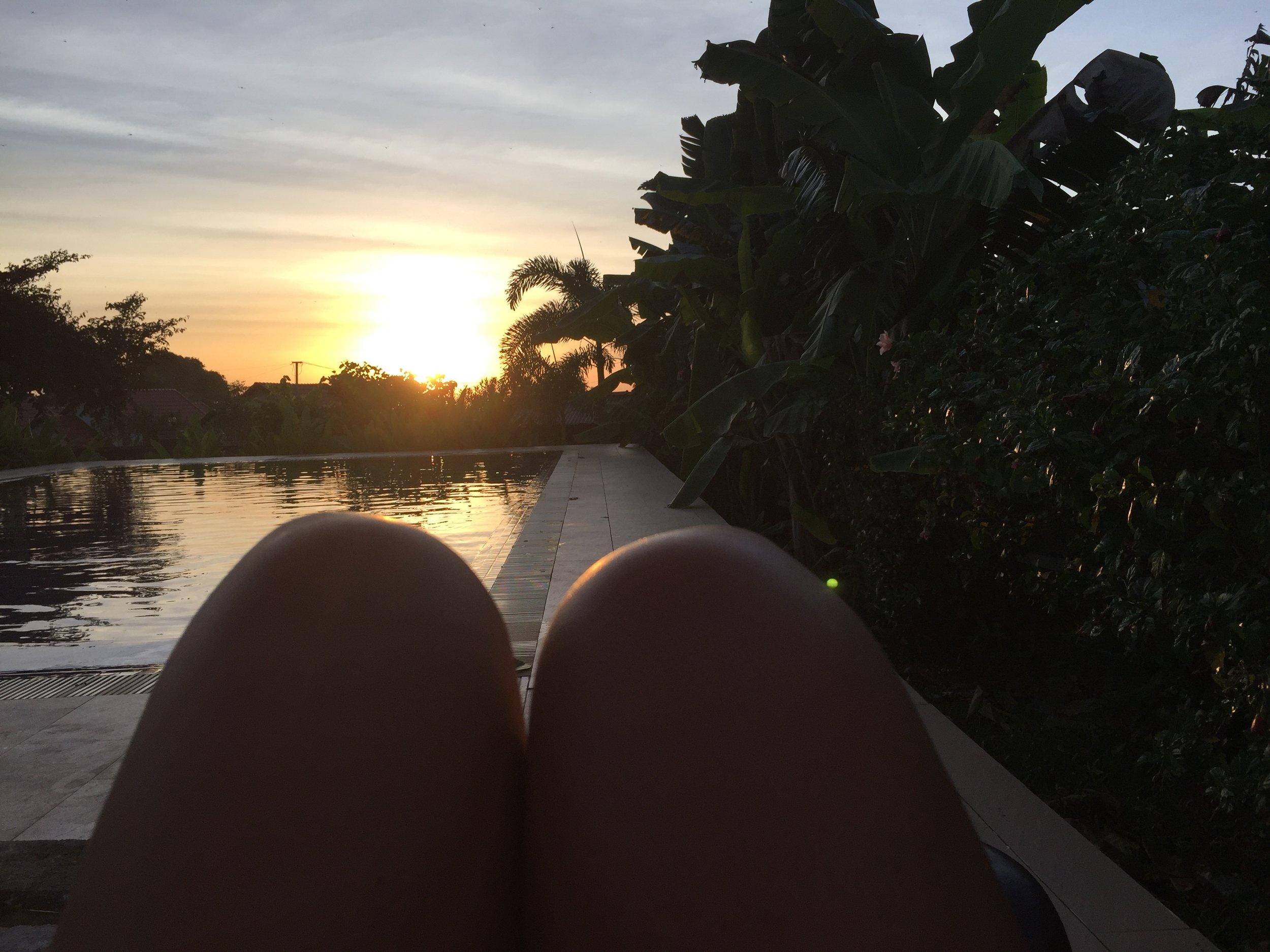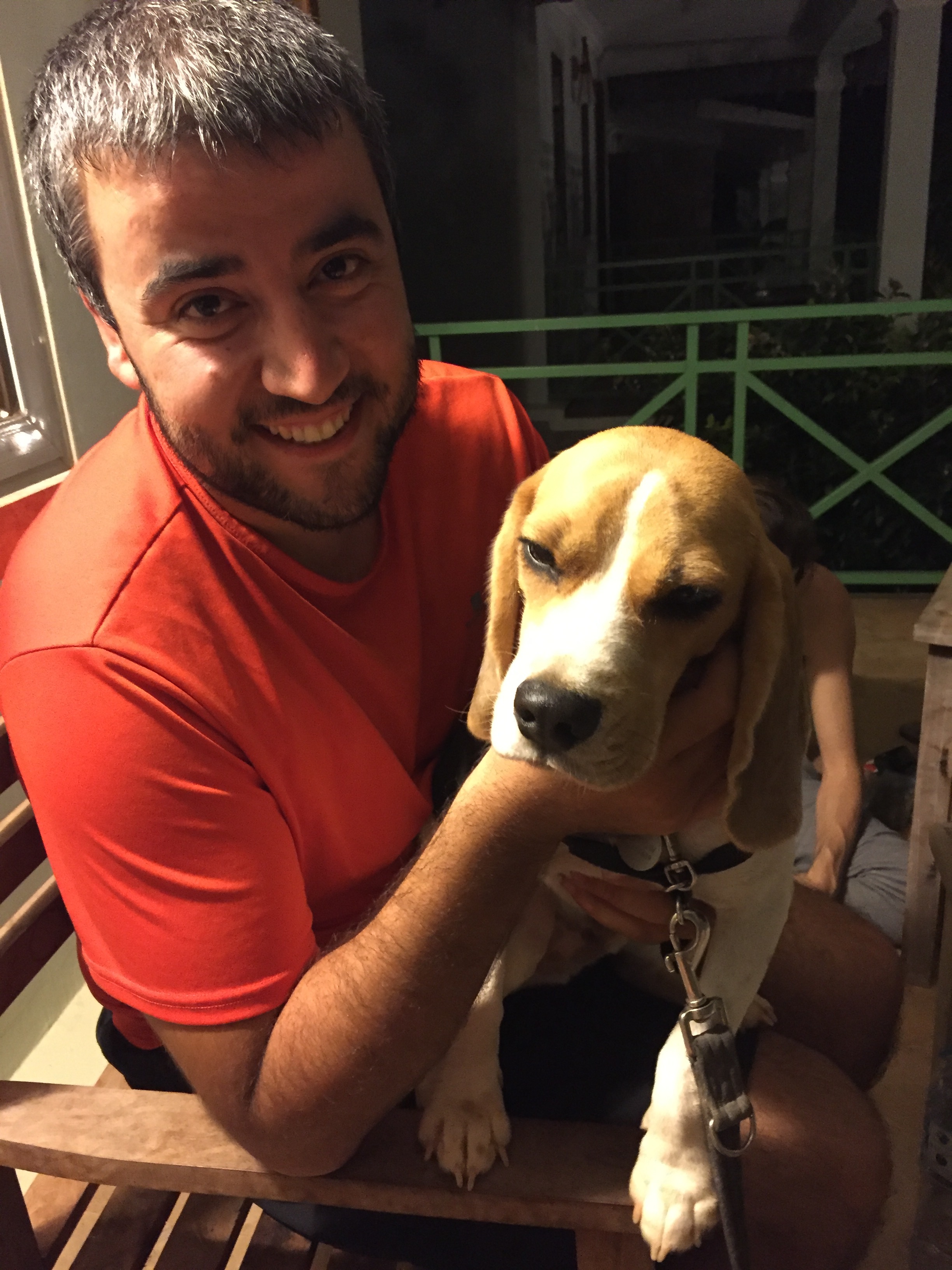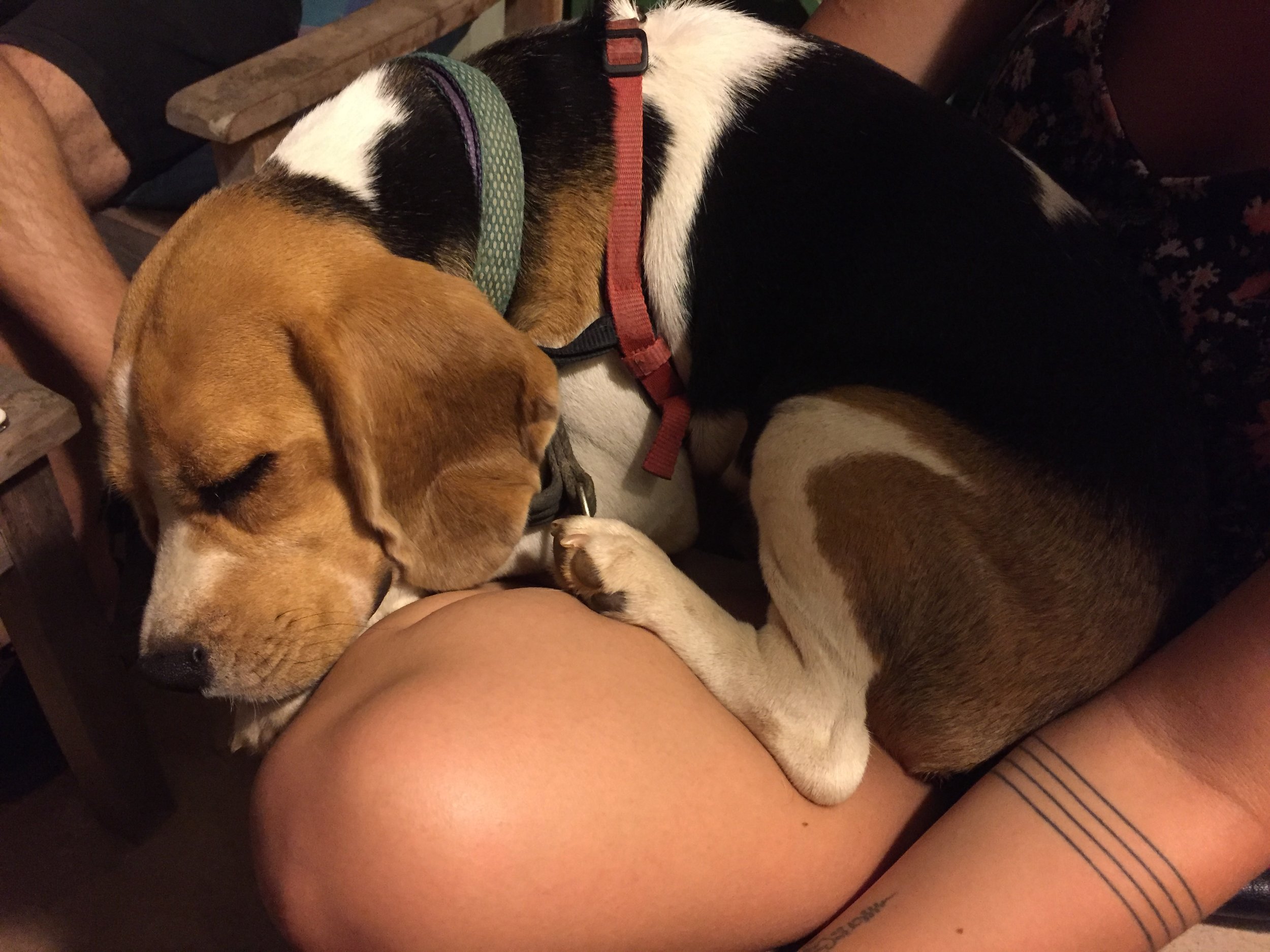Surviving Cambodia: a trip through Siem Reap, Phnom Penh and Kep
“Cambodia is a beautiful woman with a terrible past. She hasn’t committed sin; sin has been thrust upon her, violating and defiling her down to the the thinnest strands of humanity, which remain somehow intact, hanging on by a thread.”
Before traveling to Cambodia, we should have read and printed the words of Banker in the sun, especially about the cost of living in Cambodia.
The same way Berlin spoils almost every city in Europe for many (including me), once one has been in Thailand and Indonesia, the rest of Asia is somehow spoilt for the visitor.
I would go as far as saying that Thailand, Vietnam and Indonesia are the Spain, Portugal and Italy of Asia - while far from perfect, the dedication to the tourist is one of the pillars of their economies and amazing popularity. And while of course there's always a degree of abuse, these European countries figured out that having tourists returning each year happens only with keeping the kindness and prices as reasonable as possible.
There will always be Las Ramblas with its excessive prices, or Piazza San Marco, to name a few famous tourist traps. But mostly the regular spots respect prices for locals and tourists alike.
In our 12 days in Cambodia I mostly grasped that the country hasn't figured itself as what in my opinion will be the motor of their economy. Having a civil war and genocide in their recent past absolutely plays a role into their attitude in life and in business. Their "carpe diem" line of thinking means reaping the benefits from tourism fast and furiously, since who knows what tomorrow can happen. Which spreads into their institutions in terms of corruption and into their people's eagerness to catch the dollar and run.
Other aspects that were pointed out to me as reasons for this situation, though, is the fact that Cambodia and its authorities put very little effort on helping the population to produce crops and grow businesses by themselves. For example, Cambodians end up crossing illegally the border to Thailand to work in agriculture at Thai soil, when they could do exactly the same in their land. But infrastructure and governmental and technical support are just not there. Even access to clean water is a big issue for 2/3 of the population living in rural areas! Therefore, many goods are imported into the country, which means paying lots of import duties at customs and filling the pockets of corrupt officials. Making in the end prices in daily life surprisingly expensive - and that is for Asian standards.
So the headline here would be: our budget barely survived Cambodia's surprises. And there's little you can do to avoid them if you visit the country in the next years.
We left Bali on the 19th of December and headed to Cambodia via Bangkok. We had been in BKK three years ago and visited our friends Alex and Julia for a couple of days. They have been living and working in South East Asia for over 4 years. Alex's photography documenting their travels is stunning and through her work at an NGO, Julia has been finding incredibly sad stories of exploitation and human trafficking that show the less obvious issues in Asia. Also, they have the cutest dog on Earth! Meet Marlow the Beagle 😍 Thanks to the 3 of them we could take a look at the tourist, local and expat world in Cambodia and we're very thankful for that!
Julia and Alex did the same on our first time visiting Bangkok: they showed us around and took us to the technology malls and the local spots for spicy Thai "tapas". Therefore, we had already done the main touristic activities. So upon arriving in Bangkok, we went straight to Khao San Road and our first thought was clear: 2 Phad Thai right away. And 20 minutes later, not yet satisfied, we order 2 more Phad Thai, because they are just simply delicious.
We spent the next full day in awe with the collective mourning Thailand is experiencing: the Royal Palace is been taken over by mourners dressed in black coming from all over the country to pay their respects to their beloved deceased king. Fascinating as it was, it ruined the logistics of our express visit to the city. No Emerald Buddha, but Wat Pho's reclining Buddha, more electronic gadgets malls and more Khao San food and fun.
Next morning we caught our bus to Siem Reap: a very comfortable coach with a crazy driver who stopped at nothing when overtaking three trucks at a time. That in a road with only 1 line for each direction. I basically spent the time on the bus staring at the front seat to not to get an anxiety attack.
The border between Thailand and Cambodia was uneventful for those purchasing the e-visa online. After years of tourists suffering greedy officials in the border, most prefer to pay a few extra dollars on the government's website. And that's the first indicator of how the culture towards the tourists can make or break Cambodia's success in the long term as a preferred destination in South East Asia.
It was definitely fun to see the microcosmos of the border in action. The casinos on the Thai side, the crowd of vendors all around trying to sell fruits, food, clothes and SIM cards, the polyglot Thai officials, the military looking ones in Cambodian soil working from fish bowls with insane aircon temperatures. I've traveled by bus from El Salvador to Costa Rica going through the borders in Honduras and Nicaragua and I tell you: the crossing between Thailand and Cambodia is a walk in the park.
Once in Siem Reap the fun started. We were greeted by tuk-tuk drivers offering their ride to our hotels for free, and who couldn't help but staring at us like hungry lions in front of fresh meat. But they must be careful on who they pick as prey: there's not such thing as free rides. The free sample serves as a connection point towards becoming the tuk-tuk driver for the whole stay in Siem Riep. That includes at least a 20$ fare riding the tourist up and down Angkor Wat for a day and plenty of extra short rides for 3-5$ to restaurants, markets and other hot spots. Which for us doesn't sound like a lot of money, but most people in Cambodia don't earn more than 150$ a month.
Sadly for our tuk-tuk driver, he made a poor choice: we were staying at Julia and Alex's place in Siem Reap and they, of course, already had a trustful driver of their choice. As soon as he realized we were not going to book him for the rest of our stay, he demanded payment for the lift and we could see in his eyes his disappointment: he was at loss for picking up the wrong tourists.
Soon enough we were at the best restaurant in Siem Reap, Chanrey Tree, for a wonderful dinner. Our friends, through their jobs and experience in town, had already figured out that more pretentious restaurants had worst food and much more expensive rates. I was happily surprised to see beautiful entrées for 6$ and main courses for 10$. The dishes were delicious but for my dismay, there was no way out from garlic. I love garlic but in the last years I've figured out it is my worst enemy: the scent stays with me 3 days and upsets my stomach.
Nevermind: we had a blast in the NENI of Siem Reap. We headed directly to bed, since at 6am Angkor Wat was awaitig our visit.
The logistics of Angkor Wat were just ridiculous. Our friends' tuk-tuk driver took us to the huge ticket booth building to get out entry: 20$ for a day, And right after, he drove us in what seemed opposite direction for at least 15 minutes to Angkor Wat. We couldn't but wonder how that could make sense in anyone's mind.
We got there a few minutes after sunrise and the temple was incredibly crowded. Hundreds, to not say thousands of tourists spread around the huge compound like ants in search for the best light and angle. We walked until the opposite entrance in order to get a more deserted view of the symbol of Cambodia and took off to see the rest.
Before that though, our tuk-tuk driver took us for a breakfast in a local spot of his choice, where all dishes, regardless of their complexity, were priced at 6$. We spent 15$ in an overrated breakfast and left thinking that how strange it was those plates cost the same as in a fancy restaurant in the center of the city.
We enjoyed Angkor Thom, The Bayon and its fighting elephants, but mostly we were in awe with Ta Prohm. The "Tomb Rider temple" is the absolute highlight. It was incredibly difficult to get pictures without plenty of tourists everywhere, and at some point, I just gave up. It's amazing to see how some trees are crushing the walls... not as spectacular as in the movie, but still awesome.!
Somehow Angkor Wat is the poster child, but there's plenty to see apart from it. We consider the 3-day ticket or the weekly ticket a bit expensive and unnecessary unless you are absolutely into ancient history and study deeply Kambucha's Khmer history. Mostly because for 20$ there is no audio guide to follow or panels to read: without a private guide (which of course you pay extra) there's not much the Western eye can grasp without help.
And that's probably my biggest critique to Angkor Wat and the plans to increase rates: in 2017 the price for the daily ticket increases to 37$ without improving the visit experience in any way. Those extra bucks look like will go directly into some official's pocket as long as the tourists keep coming and paying. Which probably will do until some breaking point, probably when reaching 50$ a day: that I believe will break it for Siem Reap.
I used to complain about the steep prices of all Gaudí's visits in Barcelona: Sagrada Familia (30€ guided tour including visit to the towers), Casa Milà - La Pedrera, Casa Batlló or Parc Güell. But considering the amazing experience they provide to the visitor, I'll STFU from now on.
After our visit we chillaxed in our favorite spot in Siem Reap - the Peace Café, featuring organic ingredients in their vegetarian and vegan dishes, local and western, an amazing garden, very well priced souvenir shop and 90-minute yoga classes for 6$. A true diamond!
Next day we headed to a floating market in a river that happened only for a few weeks a year called Kompong Phluk. And what a big mistake it was: the drive there on the tuk-tuk was 20$, the entrance to the market was unsurprisingly 20$ as well, and to our big disappointment, when we reached the "market" inside a mangrove, which was featured in the pictures of the first ticket, we were supposed to pay 6$ extra for the boat ride. Since the mangrove was the highlight, we had no choice but to pay it. And if you were wondering, luckily Marlow didn't have to pay entrance - he ALWAYS charms his way in!
But of course it got worse: there was no real market. No boats full of fruits, vegetables, hand-made souvenirs floating around. No visual wonderland: just a few boats selling soft drinks in cans, snacks and school supplies, which you could purchase for you, your driver and their babies on board. And who can face emotional blackmail without giving money away? We certainly couldn't.
We returned to our first boat, which took us to the Tonlé Sap lake: it's so big that it looks like you reached the ocean. Only to wait there for 20 minutes so more boats could approach us to sell us even more packaged food and snacks one can buy in any convenience store across the country. At that point, we had already realized we had spent 50€ each in an absolute tourist trap and we weren't in the mood for buying a thing.
We were so mad that when our tuk-tuk driver suggested lunch, we lied and told him we ate in the market. We were starving but we wouldn't get ripped off again. At least not that day. Or that's what we thought...
If you really really want to visit a floating village in Cambodia, now that I googled about it, seems like Kompong Khleang should be your choice. And of course, someone else had written in the Internet about the floating villages rip offs...
The night came and we had tickets for a Phare show, the Cambodian Circus. Our seats were only 13$ this time, which is a great price for the fun we had with the show. We made the mistake though of running late and not having dinner in the night market for 1$-2$. Instead, we ended up eating inside the venue and there they went down the drain again another 5$ for a pretty small noodle dish that felt out of a can.
And with that, Cihan decided to rename Siem Reap: from now on we'll call it Siem Rip Off. Which maybe it was only our spoilt mind after such big adventures in more moderate countries plus a bit of bad luck with our choices. BUT seems like the country is called Scambodia on the Internets for a reason...
Next day we left Siem Reap and took a taxi the 4 of us and Marlow the Beagle to Phnom Pehn. While the bus is a cheaper option, dogs are not allowed to ride on them and accounting the tuk-tuk to the bus station, 15$ per person didn't feel that much for around 5 hours drive door to door, including a half an hour lunch by the lake.
We enjoyed the company of the best taxi driver ever, who spoke great English and Thai. With him, we had the opportunity to ask about the social and political situation in Cambodia. We heard into which extent is the corruption spread in the country, the unbelievable scheming of the government, that kids need to pay 1$ a day per child to their teachers so the lessons are longer and more comprehensive, but also to avoid unfair bad marks, since the teachers earn so little.
Also, how the somehow mystical image of Buddhist monks doesn't apply to Cambodia - we were surprised to see them walking around and riding on motorbikes with the latest iPhones in hand, and we couldn't help wondering how that worked. Our taxi driver explained that they receive expensive gifts for many various reasons, a popular one being predicting the best day to marry on a Saturday, so as many guests as possible attend the wedding - and contribute to the family with 30$ (a small fortune for a local Cambodian).
And the most heartbreaking story came for all of us when our driver confessed that despite loving Thailand, learning Thai since being a kid and having been a Thai teacher, he had never accomplished his dream of visiting Thailand. The reason: he didn't have a passport because they cost 130$ and he couldn't afford one.
To put it in perspective, it would be as if I had learned German all my life in Spain and I couldn't afford to visit because the passport costs me 1.300€. It's even worse because Thailand and Cambodia are neighboring countries. And because we are so privileged we don't even see how lucky is to have a passport that we can afford. The Spanish one through the Spanish Embassy in Germany is less than 27€, while the German is around 60€. I'm still trying to figure out how to raise a bit of money to make this fine man dream come true... any ideas?
Our friends had booked weeks in advanced a top accommodation for Christmas on the river bank in Phnom Penh through Airbnb. While quite out of our budget and different from where we usually stay, the flat was dreamy: from the balcony we could see the point where the Tonlé Sap river meets the Mekong river.
Christmas Eve came: I don't celebrate Christmas and neither does Cihan, but it gave us an excuse to get a hipster dinner in the Cambodian restaurant and cocktail bar Long After Dark, which we paired with an Old Fashioned. We fell in a food coma 10 hours before most of the western world did and spent the next Christmas day on a boat tour on the Mekong to see the sunset. And finally for dinner we hit the night market and its amazing
The next days we explored the city by foot and got lost through street markets full of meat and still alive fish, street food stalls, hipster cafés and, for the first time since we've been in South East Asia, we came directly across sex tourism bars. We certainly are not looking for it (in our 3 visits to Thailand, we've never been in Pattaya, for example), but it just turns out the river side streets in Phnom Penh are the place to catch middle-aged western men enjoying the company of barely legal ladies.
We also visited the Tuol Sleng Prison Museum, also known as the S-21 building, where between 12,000 to 20,000 thousands of Cambodians were imprisoned and tortured during the Khmer Rouge terror regime led by Pol Pot, which lasted less than 4 years. In total, a quarter of the total population of Cambodia died murdered by the Khmer Rouge officials or from exhaustion and starvation in the force labour camps. There are only 12 confirmed survivors who were detained in that prison. The rest were murdered and buried in the "killing fields" at Choeung Ek, 15 kms south of Phnom Penh. We decided to not to visit them, since we felt that the line between interest into learning about the history of the country and the search for a "sensationalist" experience was quite blurred.
There are many pictures I don't feel I can publish here, since out of context they become macabre. On display in the exhibition you can see photographs of the killing fields, of corpses and paintings showing the different torture methods made by one of the survivors of Tuol Sleng. The Cambodian genocide is a very recent memory, and a strong reminder of what humans are capable to do to other humans that don't share their same ideas and beliefs, when in a position of power, when we call others the enemy and we dehumanize them.
On 29th December we left Phnom Penh and headed to Kep, a quiet local town near Kampot that usually gets full of locals for New Year's Eve. We were astonished that in a country with a very poor road infrastructure suddenly a seemingly empty coastal town had almost a highway as main street. We stayed separated in Q Bungalows and Le Kep Bungalows, since for NYE the town was fully booked. The bungalows were again more in the range of what we usually pay when we are on holidays for a few weeks, and not the price we can afford being on a 9-month trip without having a monthly income. But they didn't disappoint: the bungalows faced the sunset, the pools allowed for swimming and the food was delicious!
The day after we rented a couple of motorbikes and drove to Kampot, a town famous for growing the best pepper out of India. In all the area, all dishes can be ordered with Kampot pepper and it is incredible, especially as pepper sauce with lemon juice and paired with just caught fish! We took advantage of the hospitality of Les Mangiers bungalows and we enjoyed amazing coffee, salad, seafood, views and hammocks. Usually on a sunny day one can jump in the river for a swim, but sadly we chose a cloudy and a bit chilly day for our visit. After lunch and coffee, we finished our day in Kep Beach at sunset.
And for the last day of 2016 we decided to go for a hike in the Kep National Park, which is the crown jewel of the town. I was devoured by hungry mosquitoes and I was almost crying of pain when I took these pictures below from the sunset lookout. The sandwich baguette and lemonade in the Led Zed café brought me back to joy: nothing makes you feel more alive than having lunch surrounded by the prettiest dragon flies ever!
The New Year's Eve approached and we had dinner at the Crab Market, where you can enjoy the best fish, seafood and of course crab. As delicious as it is, though, I promise to never eat it again. I'm ashamed of having eaten it AND my fingers still hurt with the wounds...
We headed later to the Knai Bang Chatt Sailing Club for NYE drinks. Apart from having the best spot to enjoy the sunset in Kep, the Knai Bang Chatt organisation is also a powerhouse when it comes to help the community efforts in Kep. While their fireworks were really pretty, we found ourselves spending our evening with lots of fancy tourists and expats, and ironically George Michael hits on replay a few day after his death. I'm a fan, but it killed my mood somehow.
At some point we started craving a more local experience, so we left and searched for Kep Beach. And we can confirm Cambodians know how to party and how to throw fireworks up in the air! The beach was filled with families who had picnicked their dinner surrounded by hammocks and that by now were sending away sky lanterns. Even if it was past 1 am, the locals got ready for another round of fireworks and they didn't disappoint: I've never been closer to them, so much that I felt as if one of them would set up my hair on fire.
And that's how 2017 started for me!
I had kept my promise to not to drink on NYE but by the time we returned to our bungalow our neighbors had just opened a bottle of white wine, so I couldn't avoid having 2 glasses... And I promised to never make that mistake again in 2017!
Next day I could feel a slight hungover, so I had a few laps in the pool to see if that would fix it. And no, it didn't, so we decided to go to the Crab Market again, this time on broad daylight, and I ate like a pig: yet another delicious Kampot pepper big fish and fried rice with squid, all for me!
Obviously I couldn't have any dinner on that day and barely breakfast on our last day in Kep. Our time in Cambodia was over, so we took a bus to Can Tho in Vietnam - the Pho Diaries were about to start! Saying goodbye to Marlow was sooooo hard though...
Do I recommend you visiting Cambodia? I'd say Angkor Wat is a big reason to go if you happen to be nearby on your trips to Thailand and Vietnam. In my opinion, 2-3 weeks on a holiday in Cambodia can get heavy on you, but I guess after reading my big warnings, you'll be mentally prepared to the Cambodian mentality towards tourists and the hit won't hurt as much. I'd say go with your heart and wallet psychologically protected and who knows, maybe Cambodia surprises you for the best!
Have you been in Cambodia and your experience was different? I'd love to hear about succesful stories in the comments and learn from our mistakes: maybe it is worth giving the Khmers another chance?
